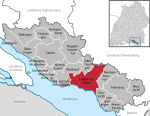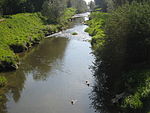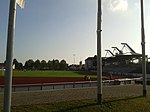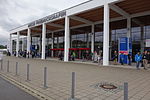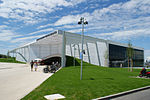Friedrichshafen Hafen station
Buildings and structures in BodenseekreisFriedrichshafenRailway stations in FriedrichshafenRailway stations in Germany opened in 1850Railway stations serving harbours and ports

Friedrichshafen Hafen station (Friedrichshafen Port station; German: Bahnhof Friedrichshafen Hafen or Hafenbahnhof Friedrichshafen) is a station in Friedrichshafen in the German state of Baden-Württemberg. It was opened on 1 June 1850 and served as a port station for the train ferry over Lake Constance to Romanshorn until 1976 and is still used for passenger services by Deutsche Bahn and Bodensee-Oberschwaben-Bahn (BOB). Today Friedrichshafen Hafen station is administered as a part of the Friedrichshafen Stadt station (Stadtbahnhof), to which it is connected by the Friedrichshafen Stadt–Friedrichshafen Hafen railway.
Excerpt from the Wikipedia article Friedrichshafen Hafen station (License: CC BY-SA 3.0, Authors, Images).Friedrichshafen Hafen station
Seestraße, Verwaltungsgemeinschaft Friedrichshafen
Geographical coordinates (GPS) Address Phone number Nearby Places Show on map
Geographical coordinates (GPS)
| Latitude | Longitude |
|---|---|
| N 47.65056 ° | E 9.48303 ° |
Address
Zeppelin Museum
Seestraße 22
88045 Verwaltungsgemeinschaft Friedrichshafen, Hofen
Baden-Württemberg, Germany
Open on Google Maps

